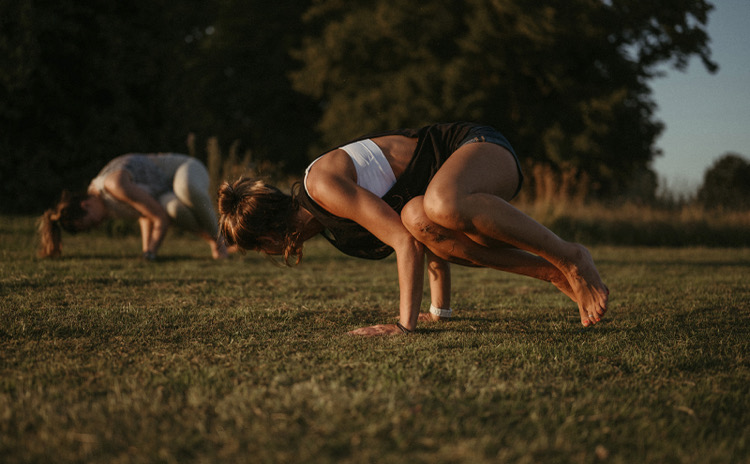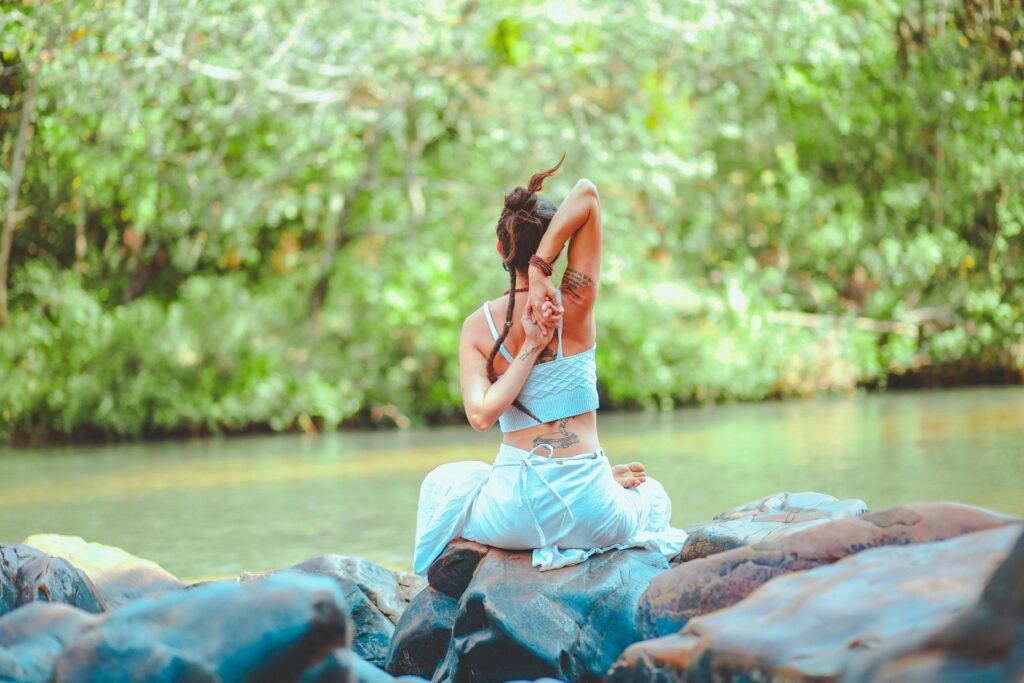
Does Yoga make you Strong?
Does yoga make you strong? A question I am asked frequently.
My strength varies dramatically depending how much time I am able to dedicate to my own practice and whether I am focused on a more dynamic practice or a more restorative practice. It ebbs and flows depending on many factors, internal, external and circumstantial. But I love feeling strong. When my body feels strong, I feel more mentally resilient. Read on to find our how yoga can make you stronger, mentally, physically, and spiritually.
Although the physical side of yoga is really in preparation for meditation, an energetic practice to allow our Prana or life force energy to flow freely through us, a great side effect is that a regular yoga practice can bring us greater physical health, energy and fitness levels.
From enhancing flexibility to fostering mental clarity, yoga offers a holistic approach to nurturing the body and mind. Amid the graceful flows and serene poses lies a potent avenue for building upper body strength through isometric movements. Imagine yourself on the mat, feeling the gentle rhythm of your breath as you move through each pose. As you delve deeper into your practice, you discover the transformative power of movement, unlocking a newfound sense of strength and resilience within yourself.
As we explore the intricate dynamics of yoga anatomy we can understand how our bodies engage and evolve through practice. Here we will focus on the upper body region.
Yoga Anatomy
In yoga, the upper body is a focal point where strength, stability, and flexibility intertwine. By delving deeper into this domain, we uncover not just physical prowess but also a deeper connection to our inner selves.
At the core of yoga anatomy lies an appreciation for the synergy between muscles, bones, joints, and fascia. This interconnected web of tissues orchestrates movements ranging from reaching and lifting to balancing and stabilising. Understanding the anatomy of the upper body provides invaluable insights into how different poses engage specific muscle groups and contribute to overall strength and stability.
Consider the shoulders, a pivotal area in yoga practice. Here, the deltoids, rotator cuff muscles, and trapezius collaborate to stabilise and mobilise the shoulders during poses like Downward-Facing Dog and Plank. Strengthening these muscles not only enhances shoulder stability but also reduces the risk of injury.
Moving down to the chest, we encounter the pectoralis major and minor muscles, which facilitate chest opening and expansion in poses like Cobra and Upward-Facing Dog. Strengthening the chest muscles not only improves posture but also enhances respiratory function and heart health.
The arms, including the biceps and triceps brachii, are primary movers in arm-focused poses like Chaturanga Dandasana and Crow Pose. Building strength in these muscles supports arm balances and inversions while enhancing functional fitness for daily activities.
The muscles of the upper back, such as the rhomboids and latissimus dorsi, provide crucial support and stability during poses like High Plank and Locust Pose. Strengthening these muscles alleviates tension, promotes spinal health, and enhances postural alignment.
Core engagement is integral to maintaining stability and control in arm balances, inversions, and backbends. The rectus abdominis, obliques, and transverse abdominis work synergistically with the upper body muscles to foster balance and proprioception.
Understanding Isometric Movement in Yoga
Picture yourself in Plank pose, feeling the subtle tremble of your muscles as you engage your core and press firmly into the ground. With each breath, you draw upon the inner reservoir of strength within you, finding stability and grace amidst the challenge. This isometric hold not only strengthens your arms, shoulders, and chest but also nurtures a profound sense of connection between body, mind and breath.
Benefits of Building Upper Body Strength
As you deepen your practice, you begin to reap the rewards of building upper body strength. With a strong upper body, you stand taller, exuding confidence and poise in every aspect of your life. As you embrace your inner strength, you discover a newfound sense of empowerment and self-assurance that transcends the physical realm.
Integrating Isometric Movement into Your Practice
We can explore the depths of our practice with curiosity and enthusiasm. With each hold, you challenge yourself to go beyond your comfort zone, embracing the discomfort as an opportunity for growth. Whether you’re holding Warrior II with fierce determination or flowing through a series of Chaturanga push-ups with grace and control, every moment on the mat becomes a catalyst for transformation and self-discovery.
Beyond the physical realm, yoga anatomy encompasses subtle energy systems like the chakras and nadis, which influence the flow of prana (life force) throughout the body. Engaging in poses that open the heart centre and throat chakra not only strengthens the physical structures of the upper body but also deepens our emotional and spiritual connection.
As we understand more about our bodies and develop more strength and flexibility, we can unlock our transformative potential. Through mindful movement, breath awareness, and reverence for our anatomical landscape, we embark on a journey of self-discovery, empowerment, and holistic well-being. Strengthening the upper body muscles not only nurtures physical prowess but also nourishes the soul, fostering a sense of wholeness and vitality that extends far beyond the confines of the yoga mat.
If you’d like more information on yoga philosophy please contact me or book here to practise with me in Marlow, Twickenham and online.
With love
Anney xx




